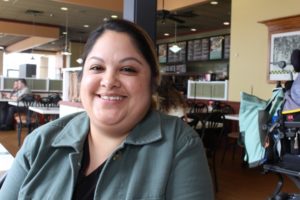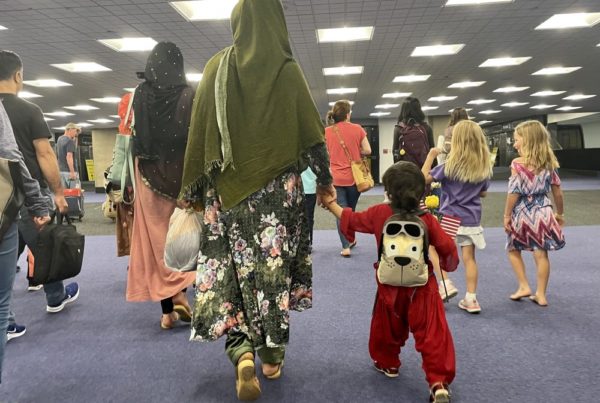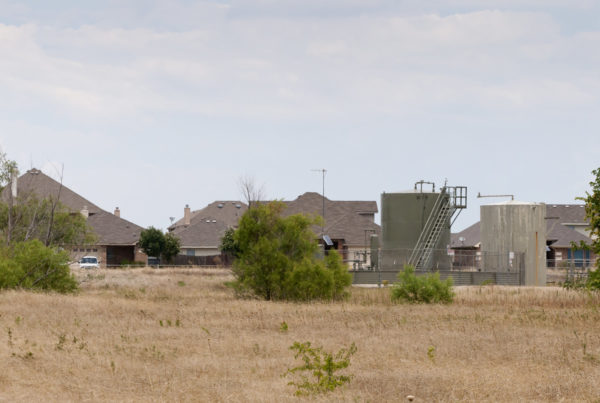From KERA:
Nurse practitioner Rachel Stewart has a primary care clinic in Keller, north of Fort Worth, that opened in spring 2020. Even though COVID-19 case numbers are waning in North Texas, she still sees people with symptoms of the virus, and consistently asks all of her patients about their vaccine status.
“I do ask that question, every new patient that comes in: Have you had any COVID vaccines? Are you planning to get a COVID vaccine? If you haven’t, why are you not getting them?” she said. “It’s a daily conversation.”

Rachel Stewart in her clinic in Keller, TX. Stewart is a nurse practitioner who provides primary care for both adults and children.
Fewer than half of Texans 12 and over are fully vaccinated. The remaining folks are more likely to be persuaded after a one-on-one conversation with a doctor who knows them.
Stewart, for example, talks to patients about her own decision to get the vaccine.
“Yes, my arm was sore. Yes, I did have some fever and some headache for a few hours,” she tells them. “But I feel comfortable in the fact that I’m not going to end up in the hospital on a ventilator.”
COVID-19 vaccine mega-sites in Texas have been closing with the continued drop in demand for the shot. Vaccinations at The Potter’s House Church in Dallas ended in May, and AT&T Stadium in Arlington stopped giving vaccines in April. The large site at Fair Park is set to shutter in August.
That leaves chain pharmacies, hospitals and smaller clinics as the main ways people will be able to seek out and obtain a vaccine.
If they want one.
“Trust is the only thing” that will move the remaining people to get the vaccine, said Dr. Salma Saiger.
Saiger has built up trust with her patients over the 11 years she’s practiced primary care in Mesquite, just east of Dallas. She thinks people will put their reservations aside and get the vaccine after being counseled by their doctor.
“If, okay, my primary care doctor has taken care of me, she’s always given me good advice, she’s never misled me, [and] she’s telling me something … okay, I’ll trust her,” Saiger said.
Combined, the five providers in Saiger’s office vaccinate fewer than 10 people a day for COVID-19 — a far cry from the early days, when Saiger said her cell phone was “the most popular” number.
The big rush is long over, and the remaining patients generally fall into two groups: People okay with getting the vaccine, but who haven’t gotten around to it, and those who need some persuasion.
Patient skepticism comes from all kinds of things. Social media posters can spread disinformation. But it’s easy to forget that news of the vaccine came fast on the heels of the virus, even though the technique used for the Pfizer and Moderna vaccines had been in development for years. That speed gave many people pause.
“To me, I was kind of skeptical at first, because I was like, okay, so how did they do a COVID vaccine so quick?” said Yajaira Pardo of Kaufman, one of Saiger’s patients. “That was my biggest question.”
Pardo, a medical assistant in a pediatric clinic, first talked about the vaccine with Saiger on a visit unrelated to coronavirus. She then mulled it over with her husband, who thought getting vaccinated was a good idea. At a follow-up visit with Saiger, they talked about the vaccine again.
In the end, Saiger’s own story about getting her family vaccinated helped convince Pardo to get the shot.
“She told me that since we’re all in the medical field, that it’s very important for us to set that example to our family,” Pardo said. “That is one of the things that really clicked in my head and made me think about it really hard.”
The press conferences and news reports featuring government officials or experts didn’t sway her. Pardo said if it weren’t for her primary care doctor, she wouldn’t have gotten vaccinated.

Yajaira Pardo of Kaufman is one of Dr. Saiger’s patients. Her conversations with Saiger, her primary care physician, helped convince her to get the COVID-19 vaccine.
Bret Jaspers
Primary care providers work in many different types of medical settings. The Texas Department of State Health Services does track the number of vaccine doses administered by facility type, although “primary care provider” is not a specific category, according to an agency spokesperson.
There’s no question primary care doctors like Rachel Stewart and Salma Saiger are in demand. According to a state report from last year, the supply of full-time primary care doctors seeing adults in 2018 was only about 78% of what was needed in Texas.
In interviews, both considered their administration of the COVID-19 vaccine to be a public service — a way to help their communities stay healthy.
“We are the backbone [of] medicine, right?” Saiger said. “Patients come to us first, they listen to our advice first. So I think that will be a very major role for all primary care doctors to do.”
Got a tip? Email Bret Jaspers at bjaspers@kera.org. You can follow Bret on Twitter @bretjaspers.














